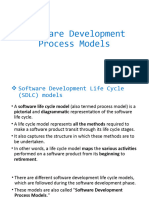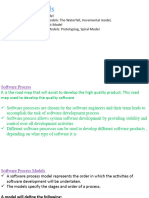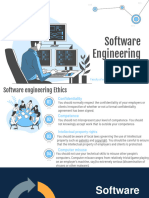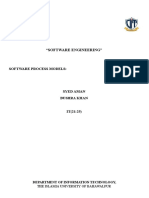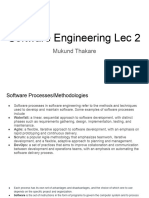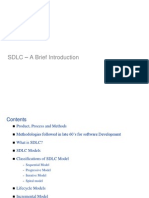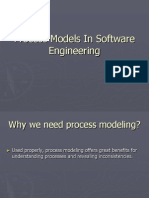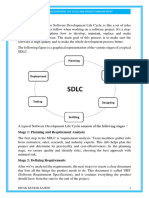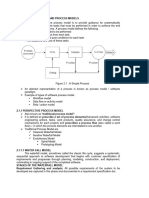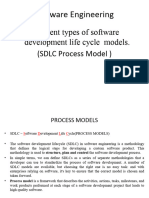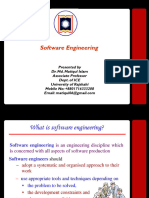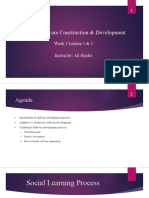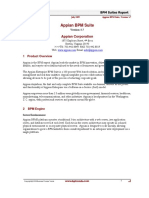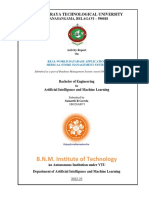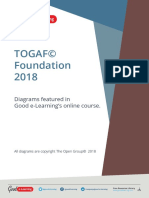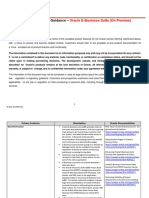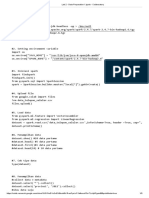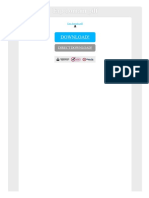0% found this document useful (0 votes)
318 views19 pagesGeneric Process Framework
The document discusses software engineering processes and models. It describes a generic process framework that includes communication, planning, modeling, construction, and deployment. It then discusses modeling which involves software requirements analysis and design. Traditional process models are introduced, including the software development life cycle (SDLC). The waterfall model is described as the oldest software lifecycle model, involving sequential phases from requirements to maintenance without iteration or overlap. Feedback loops can be added to address some limitations.
Uploaded by
Muhammad JamshaidCopyright
© © All Rights Reserved
We take content rights seriously. If you suspect this is your content, claim it here.
Available Formats
Download as PPTX, PDF, TXT or read online on Scribd
0% found this document useful (0 votes)
318 views19 pagesGeneric Process Framework
The document discusses software engineering processes and models. It describes a generic process framework that includes communication, planning, modeling, construction, and deployment. It then discusses modeling which involves software requirements analysis and design. Traditional process models are introduced, including the software development life cycle (SDLC). The waterfall model is described as the oldest software lifecycle model, involving sequential phases from requirements to maintenance without iteration or overlap. Feedback loops can be added to address some limitations.
Uploaded by
Muhammad JamshaidCopyright
© © All Rights Reserved
We take content rights seriously. If you suspect this is your content, claim it here.
Available Formats
Download as PPTX, PDF, TXT or read online on Scribd
/ 19

